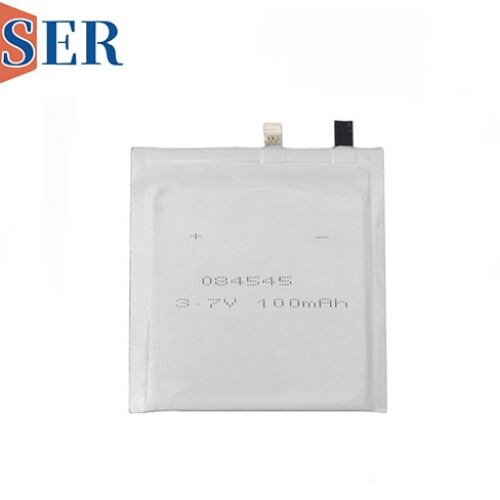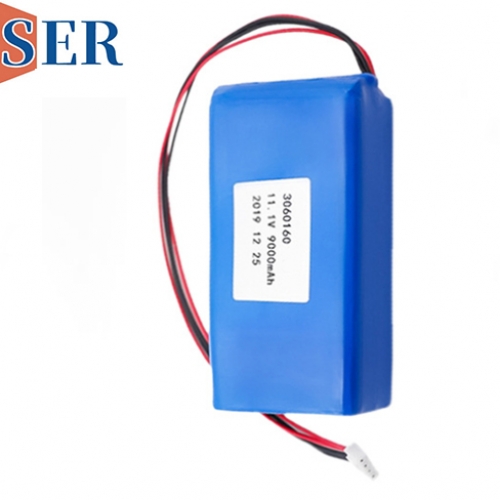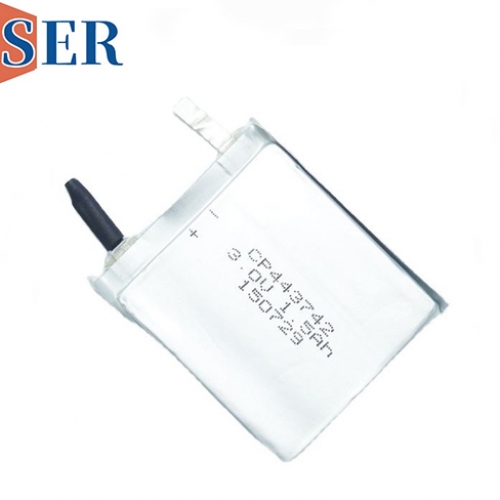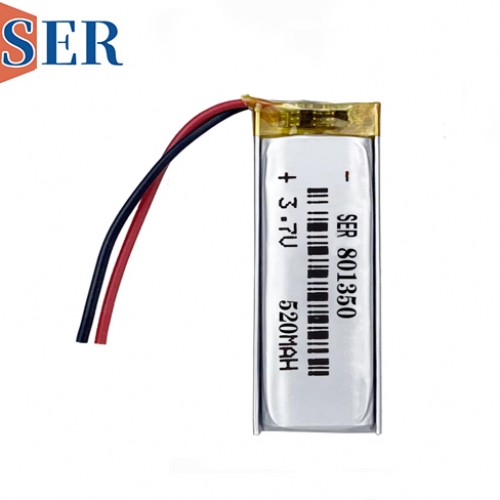CP Pouch Battery CP263840 3V 800mAh LiMNO2 Soft Pack Battery for E-tag and Access ID Card Applications
CP Pouch Battery CP263840 3V 800mAh LiMNO2 Soft Pack Battery for E-tag and Access ID Card Applications
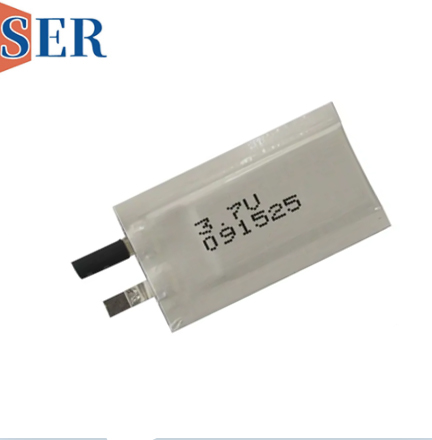
In the fast-paced world of modern electronics, the demand for compact, reliable, and high-performance power sources has never been greater. From smart transportation systems to secure access control, devices that power our daily lives and critical infrastructure rely heavily on batteries that can deliver consistent energy, withstand diverse environmental conditions, and meet stringent safety and regulatory standards. Among the array of battery technologies available today, lithium-based solutions stand out for their exceptional energy density, long lifespan, and stable performance—and the CP263840 3V 800mAh Lithium Manganese (LiMnO₂) Soft Pack Battery with Connector emerges as a game-changer for two mission-critical applications: E-tags (Electronic Toll Collection Tags) and Access ID Cards.
This article delves into the technical specifications, key features, application-specific advantages, and regulatory compliance of the CP263840 CP ultra thin battery, exploring how it addresses the unique challenges of E-tag and Access ID Card systems while setting new benchmarks for reliability and efficiency in the low-power electronics sector.
1. Introduction: The Role of Compact Batteries in Modern E-tag and Access ID Card Systems
Before examining the CP263840 ultra thin battery in detail, it is essential to understand the context of its target applications. E-tags and Access ID Cards are not mere convenience tools—they are integral components of systems that prioritize speed, security, and uninterrupted operation.
1.1 The Evolution of E-tag Technology
Electronic Toll Collection (ETC) systems have revolutionized transportation by eliminating the need for manual toll booths, reducing traffic congestion, and streamlining the flow of vehicles on highways, bridges, and tunnels. An E-tag, typically mounted on a vehicle’s windshield, uses Radio-Frequency Identification (RFID) or Dedicated Short-Range Communication (DSRC) technology to communicate with roadside readers, automatically deducting toll fees from a linked account. For this system to work seamlessly, the E-tag’s battery must:
1.2 The Critical Need for Reliable Power in Access ID Cards
Access ID Cards—used in offices, airports, data centers, and residential buildings—have evolved from simple magnetic stripe cards to smart cards embedded with chips and antennas. These cards require power to activate RFID or Near-Field Communication (NFC) functionality, enabling secure authentication and access control. The battery in an Access ID Card must:
Against this backdrop, the CP263840 LiMnO₂ Soft Pack Battery was engineered to meet these exact requirements. Its combination of 3V nominal voltage, 800mAh capacity, and soft pack design makes it an ideal power source for E-tags and Access ID Cards, while its eight key features address the most pressing needs of these applications.
2. Technical Specifications of the CP263840 LiMnO₂ Soft Pack Battery
To appreciate the CP263840’s performance, it is first necessary to break down its core technical specifications. These parameters not only define the battery’s capabilities but also explain why it is uniquely suited for low-power, long-duration applications like E-tags and Access ID Cards.
These specifications are not arbitrary—each is tailored to address the constraints of E-tag and Access ID Card systems. For example, the 3V nominal voltage aligns with the power needs of RFID and DSRC modules, which typically require 2.7V–3.3V to operate. The 800mAh capacity, meanwhile, balances energy storage with size: it is large enough to avoid frequent replacements but small enough to fit within the limited space of a windshield-mounted E-tag or a wallet-sized ID card.
The LiMnO₂ chemistry is another critical choice. Unlike lithium-ion (Li-ion) batteries, which are rechargeable but require complex protection circuits to prevent overcharging, LiMnO₂ is a primary battery that offers inherent stability. It does not suffer from memory effect (a common issue with nickel-based batteries) and has a low risk of thermal runaway, making it safe for use in consumer-facing devices like E-tags and ID cards.
3. Key Features of the CP263840 Battery: Driving Performance and Reliability
The CP263840’s technical specifications are brought to life by its eight key features, each of which solves a specific challenge in E-tag and Access ID Card applications. Below is a detailed analysis of how each feature adds value to end-users, device manufacturers, and system operators.
3.1 High Energy Density: Maximizing Power in Minimal Space
Energy density—measured in watt-hours per liter (Wh/L) or watt-hours per kilogram (Wh/kg)—is a critical metric for compact batteries. It refers to the amount of energy a battery can store relative to its size or weight. The CP263840 LiMnO₂ battery boasts a high energy density of approximately 500 Wh/L, significantly higher than traditional alkaline batteries (which typically offer 150–200 Wh/L) and even some other lithium chemistries like lithium-thionyl chloride (Li-SOCl₂), which can be bulky and less stable.
For E-tag manufacturers, this high energy density means they can design slimmer, more aerodynamic devices without sacrificing battery life. A smaller E-tag is less likely to obstruct the driver’s view and more aesthetically pleasing, improving user adoption. For Access ID Cards, high energy density allows the battery to fit within the standard 0.76mm thickness of a credit card, ensuring the card remains portable and easy to carry.
3.2 High Single Cell Voltage: Simplifying Circuit Design
The CP263840 operates at a nominal voltage of 3V, a “sweet spot” for low-power electronics. Unlike alkaline batteries (which have a nominal voltage of 1.5V), the CP263840 does not require multiple cells to be connected in series to reach the voltage needed for E-tag and Access ID Card chips. This single-cell design simplifies the device’s circuit layout, reduces the number of components (lowering manufacturing costs and failure risks), and minimizes the overall size of the power supply module.
For example, an E-tag using a 1.5V alkaline battery would need two cells in series to reach 3V, adding thickness and complexity to the device. The CP263840’s single-cell 3V output eliminates this need, allowing manufacturers to create more compact, reliable E-tags. Additionally, the battery’s voltage remains stable throughout its lifespan (dropping only slightly as it nears the end of its charge), ensuring the E-tag or ID Card maintains consistent performance—critical for avoiding failed toll transactions or access denials.
3.3 Light Weight: Enhancing Portability and Installation
The CP263840’s soft pack design and LiMnO₂ chemistry contribute to its lightweight profile. Weighing just 5–7 grams (depending on the connector type), the battery adds minimal weight to E-tags and Access ID Cards. For E-tags, this is important because heavier devices are more likely to fall off the windshield (especially in areas with rough roads or extreme weather). A lightweight battery ensures the E-tag remains securely mounted, reducing the need for replacements or re-installations.
For Access ID Cards, weight is equally important. A heavy ID card would be cumbersome to carry in a wallet or lanyard, leading to user dissatisfaction. The CP263840’s light weight ensures the ID card feels no different from a standard credit card, maintaining comfort and usability.
3.4 High Security: Mitigating Risks in Consumer Devices
Safety is non-negotiable for batteries used in devices that interact with consumers—especially those mounted in vehicles (E-tags) or carried on person (Access ID Cards). The CP263840 LiMnO₂ battery is engineered with multiple safety features to prevent overheating, leakage, and short circuits:
These safety features make the CP263840 compliant with global safety standards, including IEC 60086-4 (for primary lithium batteries) and UL 1642 (for lithium batteries in consumer products). For device manufacturers, this compliance reduces liability risks and ensures their products meet the safety expectations of consumers and regulators.
3.5 Stable Operating Voltage: Ensuring Consistent System Performance
One of the most common issues with low-power batteries is voltage drop—when the battery’s output voltage decreases as it discharges, leading to inconsistent device performance. The CP263840 addresses this with its stable operating voltage, which remains at approximately 3V for 80% of its discharge cycle. Only in the final 20% of its lifespan does the voltage drop to around 2.7V, which is still above the minimum voltage required for E-tag and Access ID Card chips (typically 2.5V).
This stability is critical for E-tags, which rely on consistent voltage to transmit RFID signals to roadside readers. A voltage drop could cause the E-tag to fail to communicate, leading to missed toll deductions, traffic delays, and user frustration. For Access ID Cards, stable voltage ensures the card’s NFC chip can reliably authenticate with readers, preventing access denials due to power fluctuations.
3.6 Wide Operating Temperature Range: Adapting to Diverse Environments
E-tags and Access ID Cards are used in a wide range of environments, from the freezing winters of northern Europe to the hot, humid summers of Southeast Asia. The CP263840’s operating temperature range of -20°C to 60°C ensures it performs reliably in these extreme conditions.
At low temperatures (-20°C to 0°C), many batteries experience reduced capacity and voltage output. However, the CP263840’s LiMnO₂ chemistry retains 70–80% of its capacity at -20°C, making it suitable for use in cold climates. At high temperatures (40°C to 60°C), the battery’s sealed casing and stable chemistry prevent electrolyte evaporation and thermal degradation, ensuring it does not lose capacity or leak.
For example, an E-tag mounted on a car windshield in Arizona (where summer temperatures can exceed 50°C) would rely on the CP263840’s high-temperature tolerance to remain functional. Similarly, an Access ID Card used in a refrigerated warehouse (-10°C) would not suffer from battery failure, ensuring employees can access the facility without issues.
3.7 Low Self-Discharge Rate: Extending Shelf and Operational Life
Self-discharge is the rate at which a battery loses energy when not in use. For E-tags and Access ID Cards, which may sit in storage for months before being deployed, a low self-discharge rate is essential. The CP263840 has a self-discharge rate of less than 1% per year, meaning it retains 99% of its capacity after one year of storage and 95% after five years.
This low self-discharge rate offers two key benefits:
3.8 RoHS and CE Compliance: Meeting Global Regulatory Standards
In today’s global marketplace, compliance with environmental and safety regulations is essential for device manufacturers to sell their products in major markets like the European Union (EU). The CP263840 is fully compliant with two key regulations:
Compliance with these regulations not only allows manufacturers to sell E-tags and Access ID Cards in the EU but also signals to consumers that the products are safe and environmentally responsible—an increasingly important factor in purchasing decisions.
4. Application-Specific Advantages: Why the CP263840 is Ideal for E-tags and Access ID Cards
While the CP263840’s features are impressive on their own, their true value lies in how they address the unique challenges of E-tag and Access ID Card systems. Below is a deep dive into how the battery optimizes performance, reduces costs, and improves user experience for each application.
4.1 E-tag Applications: Streamlining Toll Collection
E-tags are subjected to some of the harshest conditions of any consumer electronic device: they are exposed to extreme temperatures, vibration (from driving), and direct sunlight, all while needing to operate continuously for years. The CP263840 addresses these challenges in several ways:
4.1.1 Long Lifespan Reduces Maintenance Costs
Traditional E-tags using alkaline batteries often need to be replaced every 1–2 years, requiring users to visit service centers or mail in their devices—an inconvenience that leads to lost revenue for toll operators (due to inactive tags) and frustrated customers. The CP263840’s 800mAh capacity and low self-discharge rate extend its lifespan to 3–5 years, reducing the frequency of replacements. For toll operators, this translates to lower customer support costs and higher system uptime.
4.1.2 Temperature Tolerance Ensures Year-Round Reliability
As mentioned earlier, the CP263840 operates from -20°C to 60°C, making it suitable for use in all climates. In regions like Canada, where winter temperatures can drop to -30°C (though the battery’s lower limit is -20°C, it still performs better than alkaline alternatives), the CP263840 ensures E-tags do not fail during cold snaps. In the Middle East, where summer temperatures exceed 50°C, the battery’s high-temperature stability prevents leakage and capacity loss, ensuring toll transactions are never interrupted.
4.1.3 Compact Design Enables Sleek E-tag Profiles
Modern E-tags are designed to be as unobtrusive as possible, with many manufacturers aiming for thicknesses of less than 10mm. The CP263840’s soft pack design (measuring just 4mm thick) fits easily within these slim profiles, allowing manufacturers to create E-tags that blend seamlessly with a vehicle’s windshield. This not only improves aesthetics but also reduces wind resistance (a minor but notable benefit for electric vehicles, which prioritize energy efficiency).
4.2 Access ID Card Applications: Enhancing Security and Usability
Access ID Cards have evolved from simple magnetic stripe cards to smart cards with embedded RFID or NFC chips, requiring a reliable power source to activate these features. The CP263840’s design makes it the perfect fit for these cards:
4.2.1 Flexible Soft Pack Design Fits Within Credit Card Dimensions
Standard Access ID Cards measure 85.6mm x 53.98mm x 0.76mm—identical to credit cards. The CP263840’s soft pack design is flexible enough to conform to this thin profile, unlike rigid cylindrical or prismatic batteries, which would make the card too thick to carry in a wallet. The battery’s lightweight (5–7g) also ensures the card remains comfortable to carry, even when stored with other cards.

